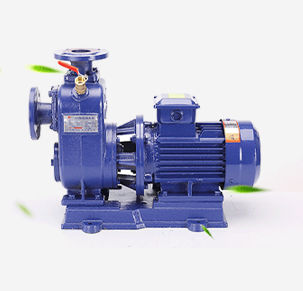Khmer
- Afrikaans
- Albanian
- Amharic
- Arabic
- Armenian
- Azerbaijani
- Basque
- Belarusian
- Bengali
- Bosnian
- Bulgarian
- Catalan
- Cebuano
- Corsican
- Croatian
- Czech
- Danish
- Dutch
- English
- Esperanto
- Estonian
- Finnish
- French
- Frisian
- Galician
- Georgian
- German
- Greek
- Gujarati
- Haitian Creole
- hausa
- hawaiian
- Hebrew
- Hindi
- Miao
- Hungarian
- Icelandic
- igbo
- Indonesian
- irish
- Italian
- Japanese
- Javanese
- Kannada
- kazakh
- Khmer
- Rwandese
- Korean
- Kurdish
- Kyrgyz
- Lao
- Latin
- Latvian
- Lithuanian
- Luxembourgish
- Macedonian
- Malgashi
- Malay
- Malayalam
- Maltese
- Maori
- Marathi
- Mongolian
- Myanmar
- Nepali
- Norwegian
- Norwegian
- Occitan
- Pashto
- Persian
- Polish
- Portuguese
- Punjabi
- Romanian
- Russian
- Samoan
- Scottish Gaelic
- Serbian
- Sesotho
- Shona
- Sindhi
- Sinhala
- Slovak
- Slovenian
- Somali
- Spanish
- Sundanese
- Swahili
- Swedish
- Tagalog
- Tajik
- Tamil
- Tatar
- Telugu
- Thai
- Turkish
- Turkmen
- Ukrainian
- Urdu
- Uighur
- Uzbek
- Vietnamese
- Welsh
- Bantu
- Yiddish
- Yoruba
- Zulu
Telephone: +86 13120555503
Email: frank@cypump.com
កញ្ញា . 06, 2024 02:26 Back to list
Sump Pump for Sewage
Understanding Sump Pumps for Sewage Essential Insights
Sump pumps are critical devices used primarily to manage water accumulation in basements and crawl spaces, especially in areas prone to flooding or excess moisture. However, when discussing sump pumps in the context of sewage, the focus shifts to a specific type designed to handle wastewater. These pumps play a vital role in maintaining sanitary conditions and protecting properties from potential water damage and contamination.
What is a Sewage Sump Pump?
A sewage sump pump is specifically engineered to handle sewage and wastewater, making it distinctly different from standard sump pumps. These pumps are equipped with a powerful motor capable of efficiently handling sewage, including solids and waste. Typically installed in a sump basin, these pumps activate automatically when the water level rises, helping to propel sewage away from your basement or crawl space and into the municipal sewer system or a septic tank.
Why Do You Need a Sewage Sump Pump?
1. Preventing Sewage Back-Up One of the primary reasons for installing a sewage sump pump is to prevent the horror of sewage backups. Such incidents can result in extensive damage and pose significant health risks. The pump ensures that wastewater is efficiently moved away, reducing the risk of overflows.
2. Handling Heavy Rainfall In areas prone to heavy rain, basements can quickly become flooded, bringing not only fresh water but potentially sewage too. A sewage sump pump can handle this influx, protecting your property from water and potential sewage damage.
3. Regulating Wastewater Levels Even in homes not prone to flooding, sewage sump pumps regulate wastewater levels within a property. This is especially important for homes that have plumbing located below the municipal sewer line, requiring the wastewater to be pumped up to prevent backflow.
How to Choose the Right Sewage Sump Pump
sump pump for sewage

When selecting a sewage sump pump, several factors should be considered to ensure optimal functionality
1. Pump Capacity Look for pumps with sufficient horsepower (HP) ratings. Generally, a 1/2 HP pump can handle lightweight sewage, while more powerful options (up to 1 HP or 2 HP) are suitable for heavier and larger volumes.
2. Vertical Lift Consider how far the pump needs to raise the sewage. Each pump has a specific vertical lift rating, determining how high it can effectively discharge wastewater.
3. Construction Material A good-quality sewage sump pump should be made from corrosion-resistant materials, as it will often come into contact with harsh substances.
4. Automatic Operation Opt for pumps with a float switch for automatic operation. This feature helps prevent overflowing by activating the pump as the water rises.
Maintenance Is Key
Regular maintenance is crucial for the longevity and reliability of sewage sump pumps. Check the pump periodically for clogs, inspect the float switch, and ensure the discharge pipe is clear. Doing so will help avert unexpected failures, especially during heavy rainstorms or emergencies.
Conclusion
In summary, sewage sump pumps are essential devices that protect homes from the risks associated with wastewater and flooding. Understanding their function, selecting the right pump, and committing to regular maintenance can save homeowners from significant headaches and costly repairs in the long run. Whether you are constructing a new home or looking to upgrade your existing systems, ensuring you have a high-quality sewage sump pump in place is a smart investment for your property’s safety and hygiene.
-
Horizontal Split Case Pump with GPT-4 Turbo | High Efficiency
NewsAug.01,2025
-
ISG Series Pipeline Pump - Chi Yuan Pumps | High Efficiency, Durable Design
NewsAug.01,2025
-
Advanced Flue Gas Desulfurization Pump with GPT-4 Turbo | Durable & Efficient
NewsJul.31,2025
-
ISG Series Vertical Pipeline Pump - Chi Yuan Pumps | Advanced Hydraulic Design&Durable Construction
NewsJul.31,2025
-
ISG Series Vertical Pipeline Pump - Chi Yuan Pumps | Energy Efficient & Low Noise
NewsJul.31,2025
-
pipeline pump - Chi Yuan Pumps Co., LTD.|High Efficiency&Low Noise
NewsJul.31,2025










